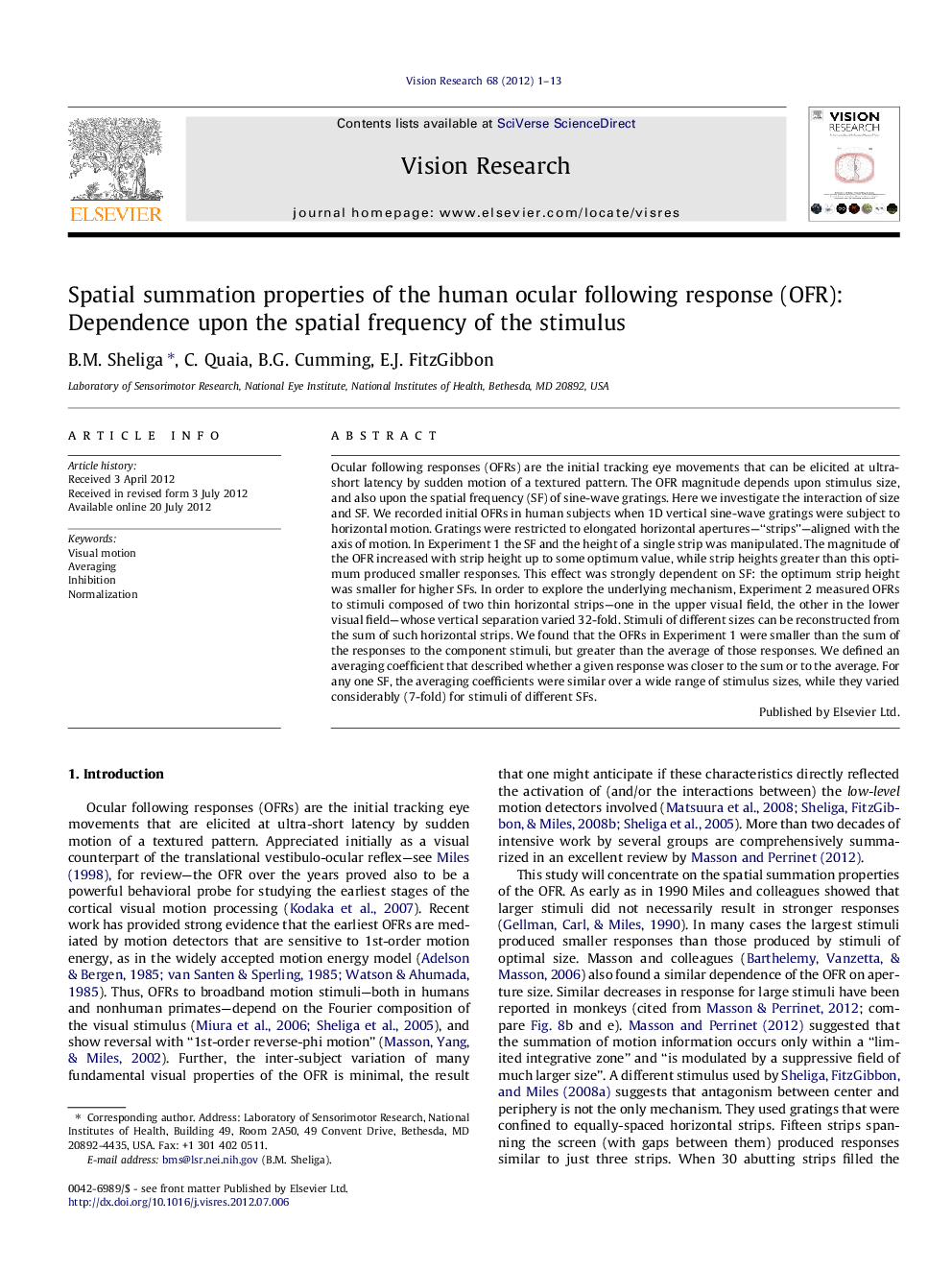| کد مقاله | کد نشریه | سال انتشار | مقاله انگلیسی | نسخه تمام متن |
|---|---|---|---|---|
| 4033922 | 1603226 | 2012 | 13 صفحه PDF | دانلود رایگان |

Ocular following responses (OFRs) are the initial tracking eye movements that can be elicited at ultra-short latency by sudden motion of a textured pattern. The OFR magnitude depends upon stimulus size, and also upon the spatial frequency (SF) of sine-wave gratings. Here we investigate the interaction of size and SF. We recorded initial OFRs in human subjects when 1D vertical sine-wave gratings were subject to horizontal motion. Gratings were restricted to elongated horizontal apertures—“strips”—aligned with the axis of motion. In Experiment 1 the SF and the height of a single strip was manipulated. The magnitude of the OFR increased with strip height up to some optimum value, while strip heights greater than this optimum produced smaller responses. This effect was strongly dependent on SF: the optimum strip height was smaller for higher SFs. In order to explore the underlying mechanism, Experiment 2 measured OFRs to stimuli composed of two thin horizontal strips—one in the upper visual field, the other in the lower visual field—whose vertical separation varied 32-fold. Stimuli of different sizes can be reconstructed from the sum of such horizontal strips. We found that the OFRs in Experiment 1 were smaller than the sum of the responses to the component stimuli, but greater than the average of those responses. We defined an averaging coefficient that described whether a given response was closer to the sum or to the average. For any one SF, the averaging coefficients were similar over a wide range of stimulus sizes, while they varied considerably (7-fold) for stimuli of different SFs.
► Stimulus size and spatial frequency interact in determining the OFRs.
► OFRs are weaker than the sum of responses to component stimuli (implying inhibition).
► OFRs are stronger than the average of responses to component stimuli.
► For any given spatial frequency, the strength of inhibition is similar at all sizes.
► The strength of inhibition varies with spatial frequency.
Journal: Vision Research - Volume 68, 1 September 2012, Pages 1–13